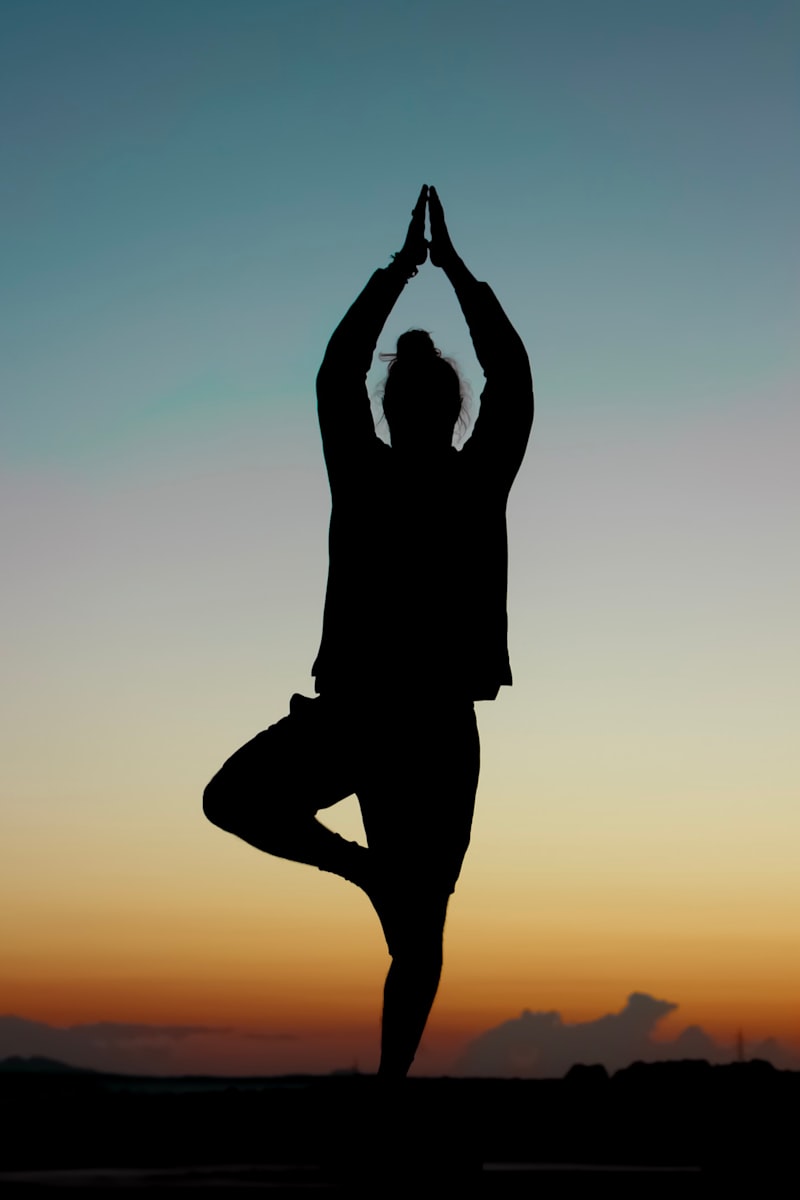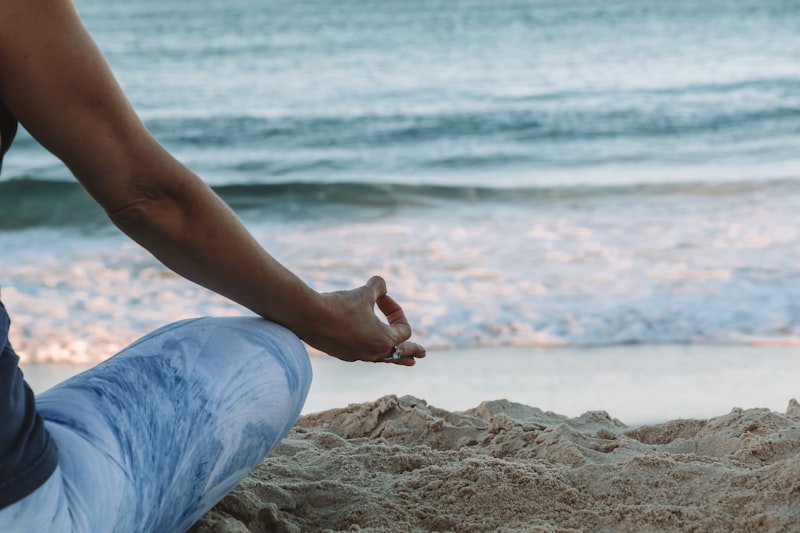Yoga for kids isn’t just about stretching and flexibility; it’s a playful journey that introduces children to mindfulness and physical fitness in a fun way. Imagine children transforming into playful animals or superheroes through yoga poses—this is the essence of yoga tailored for young minds.
One of the most popular yoga poses for kids is the “Downward Dog.” It’s like pretending to be a dog stretching out after a nap. Children love mimicking their favorite animals, and this pose allows them to stretch their backs and legs while pretending to be playful pups.

Another favorite is the “Tree Pose,” where kids stand tall on one foot, with the other foot resting against their ankle or thigh. It’s a balancing act that helps children develop focus and concentration while feeling as steady as a tree in the wind.
Yoga also incorporates games and activities that make sessions interactive and engaging. Imagine a yoga session where kids play “Yogi Says” instead of “Simon Says,” incorporating yoga poses into the game. This not only keeps them active but also helps them learn new poses in a playful manner.
For children, yoga isn’t just about physical benefits. It teaches them to breathe deeply, relax, and manage stress. In today’s fast-paced world, these skills are invaluable even at a young age.
Yoga for kids blends imagination with physical activity, making it a delightful experience that nurtures both body and mind. Whether they’re roaring like lions or balancing like trees, children benefit from yoga in ways that go beyond the mat. So, why not introduce your child to the world of yoga and watch them blossom into confident, mindful individuals?
This article aims to engage readers by describing yoga poses for children in a playful and informative manner, highlighting the benefits of yoga tailored for young ones.
Spark Joy and Flexibility: Yoga Poses Your Kids Will Love!
Looking for a fun way to introduce your kids to yoga? Discover the magic of yoga poses that spark joy and flexibility in young hearts! Yoga isn’t just for adults anymore; it’s a fantastic way to engage children in physical activity while promoting mindfulness and relaxation.

Imagine your child striking a pose like the playful Downward Dog or the graceful Tree Pose. These poses not only build strength and flexibility but also enhance their balance and coordination. As they stretch and twist in poses like the Cobra or the Butterfly, they develop body awareness and improve their posture naturally.
But why stop there? Yoga can be an adventure for kids! Picture them embodying animals in poses such as the Cat-Cow or the Frog Pose, bringing stories to life with their movements. Each pose becomes a mini-adventure, fostering creativity and imagination.
Wondering how to get started? It’s simple. Find a quiet space, lay down a mat or soft blanket, and let the journey begin. Encourage them to stretch like a soaring eagle or fold like a calm Child’s Pose. With each breath, they’ll discover the joy of movement and the serenity of stillness.
Incorporating yoga into your child’s routine can cultivate mindfulness early on, helping them manage stress and build resilience. It’s not just exercise; it’s a way for them to connect with their bodies and emotions in a playful, supportive environment.
So, why wait? Dive into the world of kid-friendly yoga today. Whether it’s morning stretches or bedtime relaxation, these yoga poses will ignite their imagination and nurture their growing bodies. Get ready to spark joy and flexibility in your child’s life with yoga they’ll truly love!
This article aims to engage readers by highlighting the benefits and fun aspects of introducing yoga to children, using a conversational tone and engaging them with vivid imagery and practical advice.
Playful Yoga: Engage Your Child with These Fun Pose Sequences
Hey there! Looking to introduce your child to the wonderful world of yoga? It’s not just for grown-ups anymore! Playful yoga is all about making it fun and engaging for your little ones while they learn to stretch and relax. Let’s dive into some exciting pose sequences that will have them giggling and stretching in no time.
Tree Pose Adventures: Start with something simple yet balancing. Imagine your child becoming a tree swaying in the wind. Encourage them to stand tall on one leg while placing the sole of the other foot against the inner thigh or calf. Arms can stretch up like branches reaching for the sky. It’s a great way to improve focus and stability!
Downward Dog Fun: Who doesn’t love pretending to be a dog? This pose is perfect for playful moments. Get your child to form an upside-down V shape with their body, hands and feet on the ground, hips up high. Encourage them to wag their ‘tail’ and breathe deeply like a puppy. It’s excellent for stretching the back and building strength.
Butterfly Bliss: Time to flutter! Sit facing each other, knees bent, and feet touching. Hold hands and gently flap your ‘wings’ like butterflies. This pose opens up the hips and encourages a gentle stretch in the inner thighs. It’s a lovely way to bond while practicing yoga together.
Snake Stretch: Slither into this one! Lie on your bellies with hands under shoulders. Slowly lift the chest while keeping hips and legs on the ground. Imagine you’re a snake arching up to say hello. It’s fantastic for strengthening the back muscles and improving posture.
Resting in Child’s Pose: After all the fun, it’s essential to relax. Guide your child to kneel, sit back on their heels, and stretch their arms forward, forehead resting gently on the mat. This pose helps them calm down and rest while promoting deep breathing.
Yoga isn’t just about stretching; it’s about fostering imagination, strength, and relaxation in children. So, what are you waiting for? Roll out the yoga mats and embark on a playful journey together!
Discover the Benefits of Yoga for Kids: Fun and Fitness Combined
Firstly, yoga enhances flexibility in a way that’s both playful and effective. Kids bend, stretch, and twist into various poses, mimicking animals, plants, and shapes. This not only keeps them engaged but also improves their balance and coordination. It’s like a dance that strengthens their muscles and joints!
Secondly, yoga teaches kids how to breathe deeply and mindfully. In a world full of distractions, this skill is priceless. By focusing on their breath during yoga practice, kids learn to calm their minds and reduce stress. It’s a valuable tool they can carry into daily life, helping them stay centered and focused, whether at school or play.

Moreover, yoga promotes concentration and mindfulness. Through simple meditation techniques and breathing exercises, kids learn to tune into their bodies and thoughts. This awareness boosts their ability to concentrate, making it easier for them to learn and excel in various activities.
Additionally, yoga fosters a positive body image and self-esteem. In a non-competitive environment, children of all shapes and sizes can participate and succeed. They learn to appreciate their bodies and what they can achieve, building confidence from the inside out.
Lastly, yoga is simply fun! With imaginative games, storytelling through poses, and partner activities, kids are constantly entertained. It’s like a mini-adventure every time they unroll their yoga mats.
Yoga for kids isn’t just about physical exercise—it’s a holistic approach to wellness that nurtures their bodies, minds, and spirits. Whether they’re striking a pose or simply taking a deep breath, they’re reaping the benefits of a practice that’s as enriching as it is enjoyable. Ready to introduce your child to the wonderful world of yoga?
Creative Yoga Games for Kids: Making Exercise Fun
Imagine this: a group of kids gathered in a circle, giggling as they mimic animal poses. One child is a roaring lion, another a slithering snake, and yet another a graceful butterfly. These yoga games not only encourage physical activity but also stimulate their imagination. Through these playful movements, children learn to connect with their bodies and express themselves freely.
One popular game is “Yogi Says,” a twist on the classic “Simon Says.” Here, the instructor becomes “Yogi” and guides the children through various yoga poses. “Yogi says, stand tall like a tree!” or “Yogi says, hop like a frog!” This game not only teaches yoga poses but also improves listening skills and concentration.
Another favorite is the “Yoga Freeze Dance.” Just like traditional freeze dance, kids move and groove to music. When the music stops, they freeze in a yoga pose. It could be a warrior pose, a downward dog, or even a balancing flamingo! This game enhances coordination and balance while keeping them entertained.
For younger children, “Storytime Yoga” is a magical experience. The instructor weaves a tale using yoga poses as characters or actions in the story. As the story unfolds, kids join in by performing the poses. It’s a wonderful way to combine literacy with physical activity and foster a love for storytelling.
Frequently Asked Questions
How can yoga help with children’s focus and concentration?
Discover how yoga can significantly enhance children’s focus and concentration. Learn about the specific yoga poses and breathing techniques that promote mindfulness and calmness, aiding children in improving attention spans and reducing distractions.
What are some fun yoga poses for kids?
Discover exciting yoga poses designed specifically for children to enjoy and benefit from. These poses combine playful movements with mindfulness, promoting flexibility, balance, and relaxation in a fun and engaging way.
What are the benefits of yoga for children?
Discover the benefits of yoga for children, promoting physical strength, flexibility, and balance while enhancing mental focus, relaxation, and self-awareness.
Is yoga safe for children of all ages?
Learn about the safety of yoga for children across different ages. Get clear, concise insights on the benefits and considerations for introducing yoga to kids of varying developmental stages.
How can I introduce yoga to my child?
Learn how to introduce yoga to your child with these simple steps: Start with fun poses and games to make it enjoyable. Use child-friendly language and encourage them to practice regularly in short sessions. Create a calm environment and join them occasionally to make it a shared experience.


